Discover Vosges Lakes
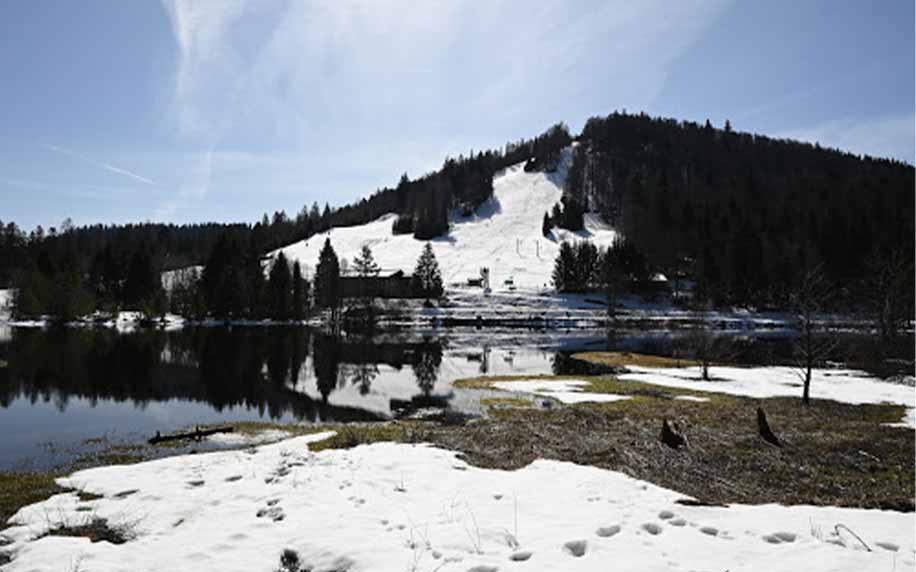
Updated On: November 22, 2023 by Ciaran Connolly
Apart from mountains and stunning views, Les Vosges are packed with natural lakes as beautiful as each other. This is our second travel destination in this sublime region: Les Vosges Lakes. Find out where you’ll be visiting in France next.
The Main Lakes of Vosges
Le Lac Blanc – The White Lake
Le Lac Blanc is a high-altitude lake located in the Vosges massif. A big rock named “Rocher Hans” overlooks the lake, with on its top the statue of the Virgin Mary. It is considered to be the largest lake of glacial origin on the eastern side of the Vosges.
Le Lac Blanc takes its name from the colour of the white quartz sand on the bottom.
At the time, Le Lac Blanc was linked to Le Lac Noir thanks to a water pipe where a hydroelectric power station creates electricity during peak time and recharges Le Lac Blanc in water by a pump system during off-peak time.
Nowadays, because of dilapidated installations, the hydroelectric activity no longer works anymore.
Features:
-1.055m above sea level
-29 ha in surface
-72m maximal depth
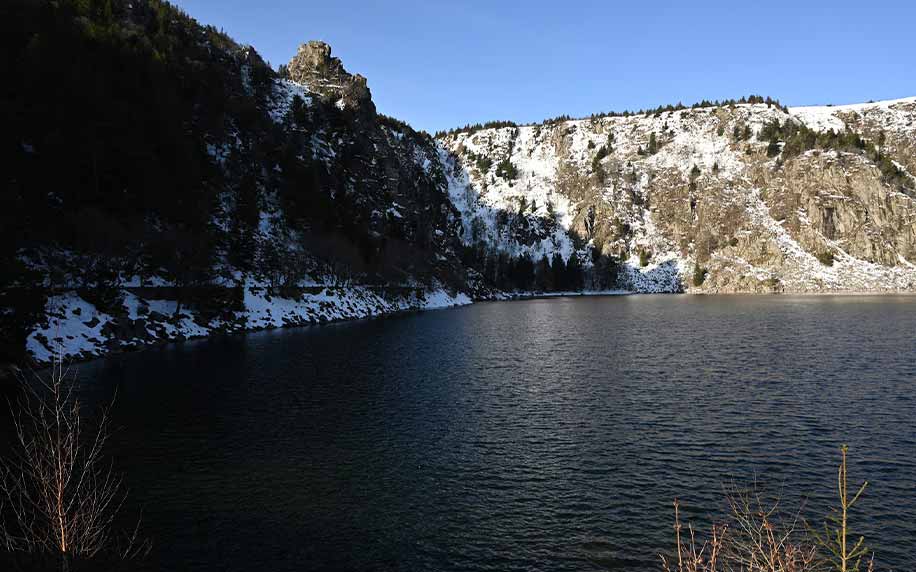
Le Lac Noir – The Black Lake
Le Lac Noir is a glacial lake located under the crest of the eastern slope of the Vosges massif, at an overage altitude of 935 metres.
Le Lac Noir takes its name from the colour of its peat bog bottom. Le Lac Noir is incredibly similar to Le Lac Blanc, except that it is smaller and shallower. Even though the hydroelectric installation no longer works, both lakes are still linked. This installation was created by René Koechlin, an engineer, between 1928 and 1934.
They began by adding a 4.6-metre-diameter gallery linking the two lakes. Then, on the northwest shore of Le Lac Noir, the hydroelectric power station was built. It uses four reversible alternators with a total power of 80 megawatts.
Features:
-955m above sea level
-14 ha in surface
-45m maximal depth
The Legend of Le Lac Noir
The legend tells that the Jean de la Roche’s Castle (also called Hans Von Felsenstein Castle) was built on the big rock which overlooks Le Lac Blanc named later “Rocher Hans”.
A shepherd famous for his piety took care of the noble man’s cows on the shores of the lake.
On the evening of All Saints’ Day, when the Lord was having a great feast, the shepherd went to his door to complain of the noise. The Lord sends the shepherd packing and continues his feast.
The Saints witness this scene and show their discontentment by triggering a terrible earthquake that demolishes the Castle. The only remains left of this Castle is a rock: “Rocher Hans”. As legend has it, the water of both lakes White and Black darken and no more vegetation grows here.
It was claimed that a human sacrifice could lift this curse.
One day, a vulture kidnapped the son of the wicked Lord of Pflixburg and threw him into the White lake, as a punishment towards the Lord and the son drowned. After this, the waters of Le Lac Blanc became crystal clear, while those of Le Lac Noir remained impenetrable and dark.
Le Lac Vert – The Green Lake
Le Lac Vert, also called Soultzeren Lake, is a small lake on the Alsatian side of Les Vosges, at the bottom of the Munster valley. It is located at the bottom of the Tanet massif, which rises between 1.000 and 1.280 meters above sea level.
Le Lac Vert takes its name from the reflection of the fir trees that surround it and to the algae that grow from late June to late July. The water of the lake becomes murky and green.
Features
-1044m above sea level
-7.2 ha in surface
-17m maximal depth
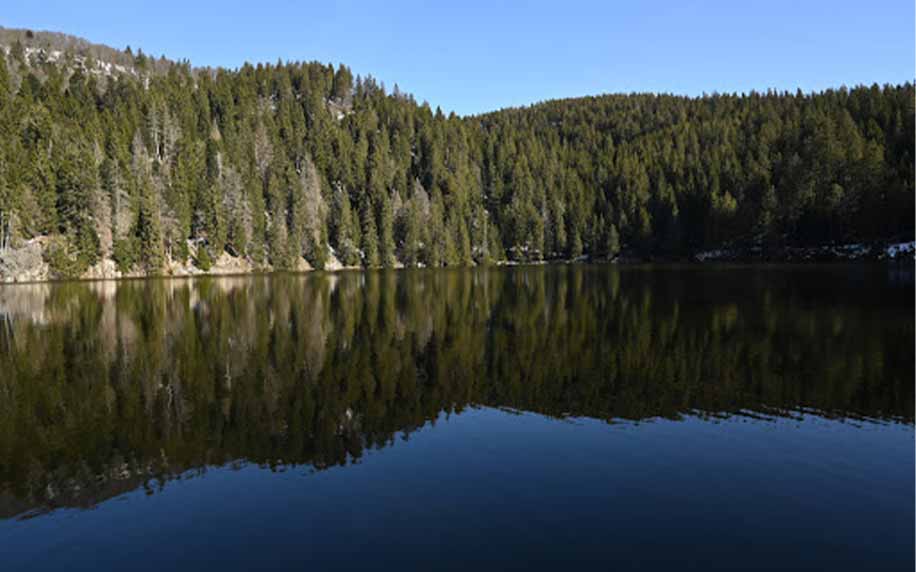
Le Lac de Lispach
Le Lac de Lispach is an ancient glacial lake, which became a peat bog through a slow and long evolution. This transformation carried out following successive colonisations by different types of plants. The rotting of these plants forms peat, also used for the distillation of whiskey in Ireland.
Lispach peat reaches a maximum of 6 metres, which corresponds to about 10,000 years of plant decomposition. These successive layers of plants allow scientists to examine and understand climate and flora changes in the region.
Features:
-909m above sea level
-12 ha in surface
-9m maximal depth
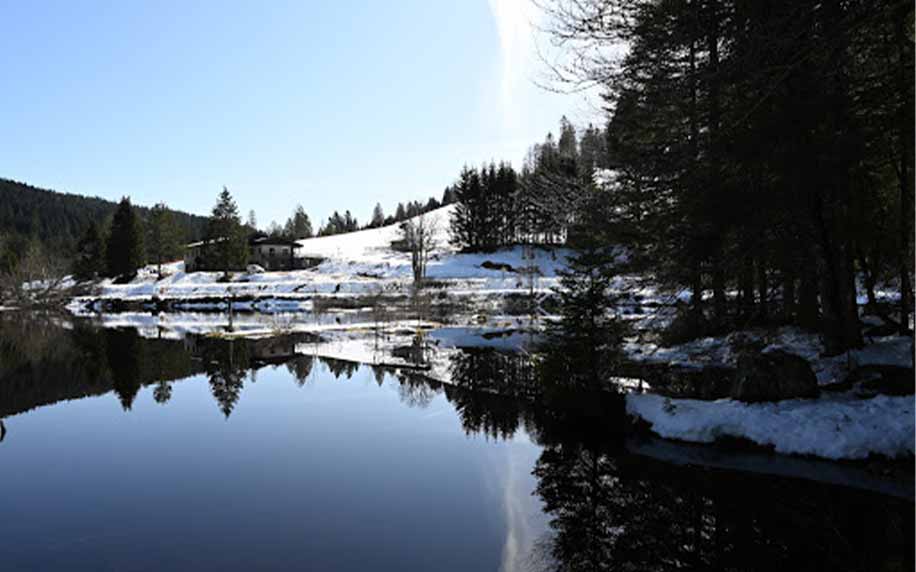
Gérardmer’s Lake
How to not forget Gerardmer’s Lake! This amazing natural lake is located in the Massif des Vosges, in Gérardmer City. Also called “Les Vosges’ Pearl”, it biggest natural lake in the Vosges.
Features:
-660m above sea level
-1.16 km square in surface
-38,4m maximal depth
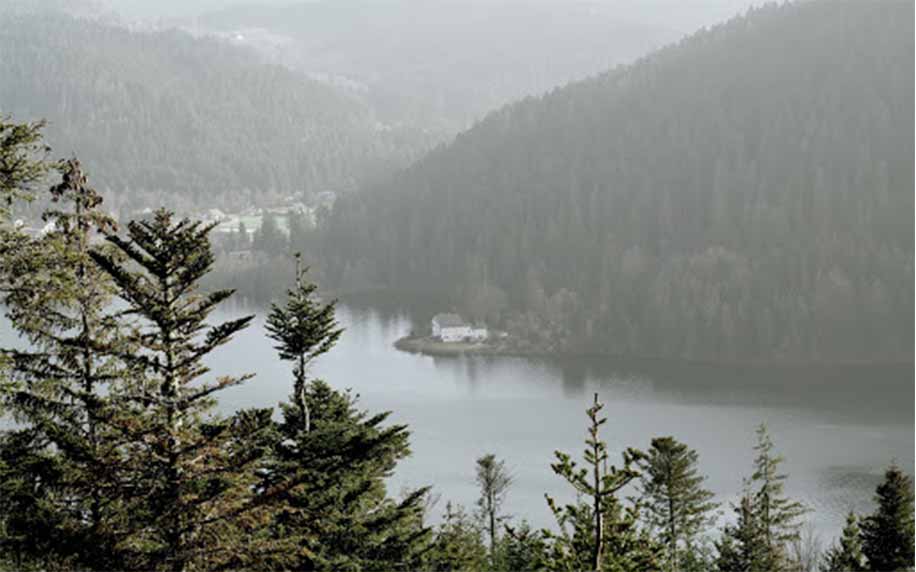
Tips for Visiting Vosges Lakes
For hiking lovers, take your backpack, a snack, a big bottle of water and enjoy a huge hike of 26km between the 4 mains Vosges lakes:
-From Le Lac Blanc to Le Lac Noir
-From Le Lac Noir to Le Lac Vert
-From Le Lac Vert to L’étang des Dames
-From L’étang des Dames to Le Lac Blanc
If you do this, you will have travelled 26 km and gained an elevation of +1400m. Just be prepared for the day trip – it takes around 7 hours!






